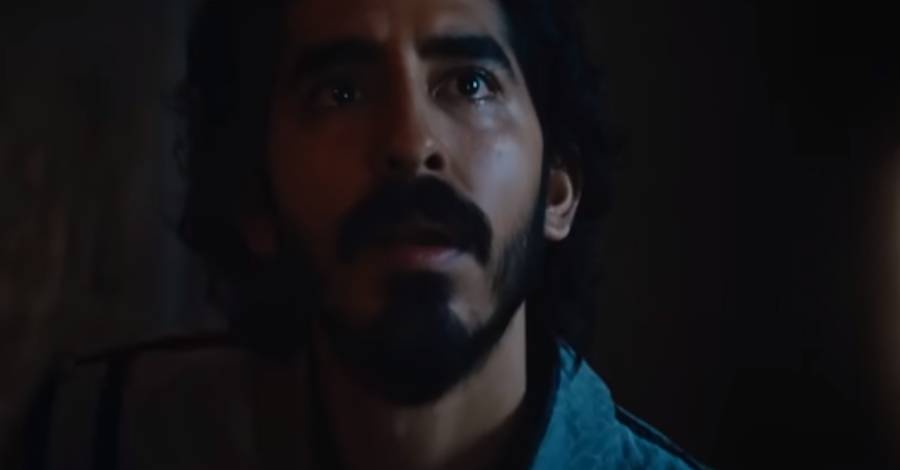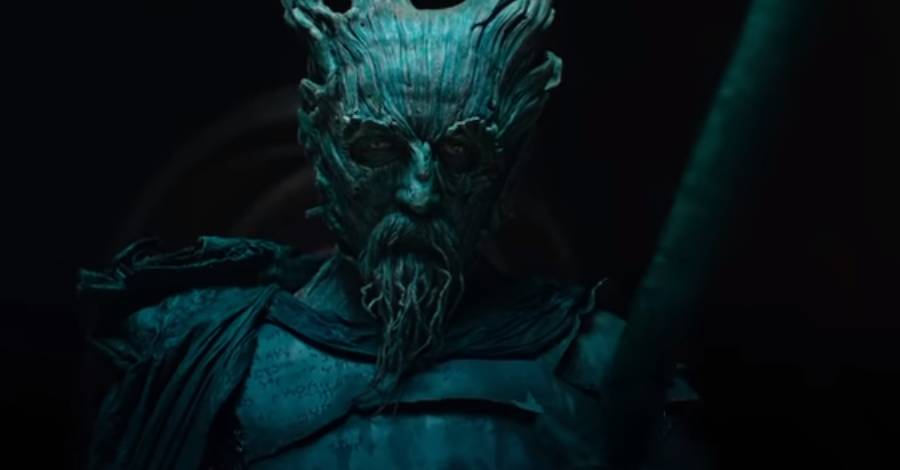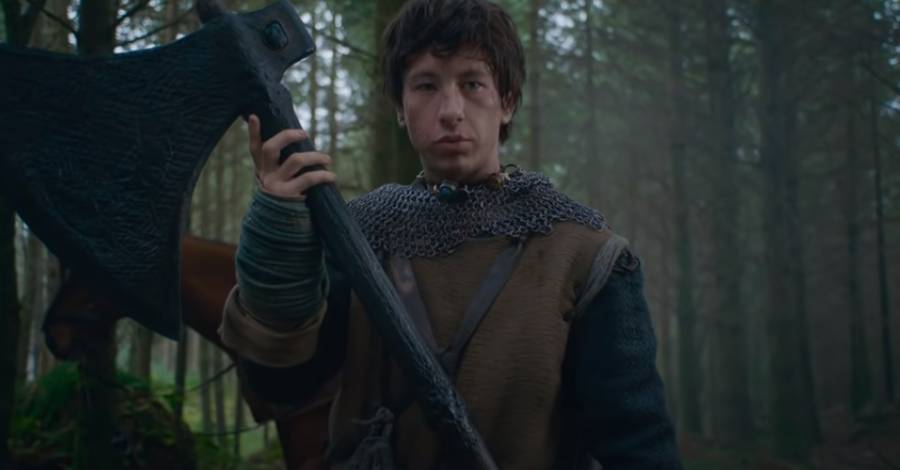The Green Knight, directed by David Lowery, is a visually mesmerizing and deeply symbolic retelling of the Arthurian legend of Sir Gawain and the Green Knight. The film, based on the 14th-century Middle English poem Sir Gawain and the Green Knight, reinterprets the chivalric quest as an introspective journey filled with surreal imagery, existential dread, and moral ambiguity.
Unlike typical fantasy adventures filled with heroic triumphs, The Green Knight is more of a meditation on fate, honor, and personal identity. The film's slow pacing, ethereal cinematography, and ambiguous ending make it a fascinating yet perplexing experience for audiences.
Movie Summary: The Knight’s Challenge and Gawain’s Journey

The story follows Gawain (Dev Patel), the reckless and inexperienced nephew of King Arthur (Sean Harris). Unlike the noble knights of the Round Table, Gawain is a man of privilege who has not yet proven himself worthy of knighthood. His life is one of indulgence, marked by his passionate but uncommitted relationship with Essel (Alicia Vikander), a common woman, and his lack of a defining heroic act.
On Christmas Day, the mysterious Green Knight (Ralph Ineson) arrives at Camelot, challenging anyone brave enough to strike him to a duel. However, there is a catch—the challenger must accept the same strike in return one year later. Gawain, eager to prove himself, impulsively beheads the Green Knight. To his horror, the knight does not die but instead picks up his own severed head, reminding Gawain that he must meet him at the Green Chapel in a year to receive an equal blow.
As the year passes, Gawain embarks on his journey to fulfill the promise. Along the way, he faces numerous trials, including an encounter with a scavenger (Barry Keoghan), a ghostly woman named Saint Winifred (Erin Kellyman), a noble lord (Joel Edgerton), and a mysterious lady (Alicia Vikander, in a dual role). Each encounter tests his virtue, courage, and perception of reality.
As he nears the Green Chapel, Gawain grows increasingly tormented by fear. Will he face his destiny with honor, or will he succumb to cowardice?
The Ending of The Green Knight Explained – A Vision of Fate and Choice

The final moments of The Green Knight are among the most cryptic and haunting in recent cinema. When Gawain reaches the Green Chapel, he kneels before the Green Knight, prepared for his beheading. As the knight raises his axe, Gawain, overcome with fear, suddenly flees.
At this moment, the film shifts into an extended vision of an alternate life. Gawain returns to Camelot and becomes king. He marries a noblewoman, abandoning Essel, and rules for many years. However, his reign is defined by dishonor and paranoia. His illegitimate child is taken from Essel, his wife is indifferent to him, and he grows increasingly haunted by the knowledge that he avoided his true test.
As an old man, Gawain finds himself alone, stripped of his crown, and moments away from ruin. In a devastating revelation, he removes his green sash—the magical item that was supposed to protect him from death—and his head falls off, symbolizing that his cowardice had only delayed the inevitable.
The film then abruptly returns to the moment in the Green Chapel. This time, Gawain remains kneeling before the Green Knight. He removes his green sash, signifying that he is finally ready to accept his fate with honor. The Green Knight, instead of beheading him, simply smiles and says, "Well done, my knight," before playfully drawing his finger across Gawain’s neck, as if to suggest either a warning or a final test.
Why Did the Ending Turn Out This Way?

The ending of The Green Knight is intentionally ambiguous, leaving room for multiple interpretations. However, the film’s themes of honor, destiny, and self-acceptance help us understand its meaning.
1. The False Life vs. The True Life
Gawain’s vision of himself as king is a "false life"—one where he runs away from his duty and achieves greatness through deception rather than honor. The vision serves as a warning, showing him the bleak future that awaits if he chooses cowardice. By witnessing the consequences of his dishonor, Gawain realizes that living without integrity is worse than death itself.
When he removes the sash in reality, it symbolizes his acceptance of true honor. He embraces the idea that death, though terrifying, is preferable to living a life devoid of virtue.
2. The Green Knight’s Final Words
The Green Knight's cryptic "Well done, my knight" suggests that Gawain has passed the final test. In the original poem, Gawain is spared because the knight only wanted to test his integrity. The film, however, leaves it ambiguous whether Gawain is actually executed or if the Green Knight simply acknowledges his courage.
The playful motion of the Green Knight’s finger across Gawain’s throat suggests that the true lesson was not about death, but about facing it with dignity. It hints that perhaps Gawain’s life is not over, but that he has now become a true knight.
3. A Reflection on Free Will
One of the most compelling aspects of the film is its exploration of free will. The entire story revolves around Gawain making choices—some impulsive, some cowardly, some noble. The final moments suggest that even in a predetermined fate, one can choose how to meet it. Gawain’s choice to remove the sash signifies his full agency in his destiny.
Themes in The Green Knight
1. The Meaning of Honor
Gawain’s journey is a test of whether he can embody the ideals of knighthood. His impulsive beheading of the Green Knight initially shows his misunderstanding of honor—he believes it’s about grand gestures rather than true courage. By the end, he learns that honor is not about avoiding death, but about facing it with integrity.
2. The Inescapability of Fate
The film constantly plays with the idea of fate vs. choice. Even though Gawain tries to avoid his destiny, he ultimately realizes that fate is inevitable. The question is not whether he can escape death, but whether he can meet it without fear.
3. Illusions and Reality
Throughout his journey, Gawain encounters numerous illusions, from the seductive lady in the lord’s castle to the eerie visions of his own future. The film blurs the line between reality and imagination, forcing Gawain—and the audience—to question what is real.
Viewers’ Reactions to the Ending
The ending of The Green Knight sparked a range of reactions among audiences. Some found it profoundly moving, appreciating its philosophical depth and open-ended conclusion. For these viewers, the film’s refusal to spoon-feed answers was a strength, allowing for deep reflection on its themes.
Others were frustrated by the ambiguity, expecting a more traditional resolution where Gawain either clearly survives or dies. The film’s slow pacing and abstract storytelling divided some audiences. Many praised Dev Patel’s performance, with his portrayal of Gawain’s transformation being one of the most celebrated aspects of the film.
Ultimately, The Green Knight is a film that demands interpretation. Its conclusion is not meant to be taken literally but rather as a meditation on life, honor, and the choices we make.
Conclusion of The Green Knight: A Timeless and Thought-Provoking Adaptation
The Green Knight is not a typical medieval epic; it is a haunting and meditative journey into the heart of chivalry and personal destiny. Its ambiguous ending, dreamlike cinematography, and thought-provoking themes make it a film that lingers in the mind long after the credits roll.
While its slow pacing and abstract storytelling may not appeal to all audiences, it remains a visually stunning and intellectually rich take on one of the most enduring Arthurian legends. Whether Gawain lives or dies is left open to interpretation—but what is certain is that by the end of his journey, he has finally become the knight he was meant to be.






